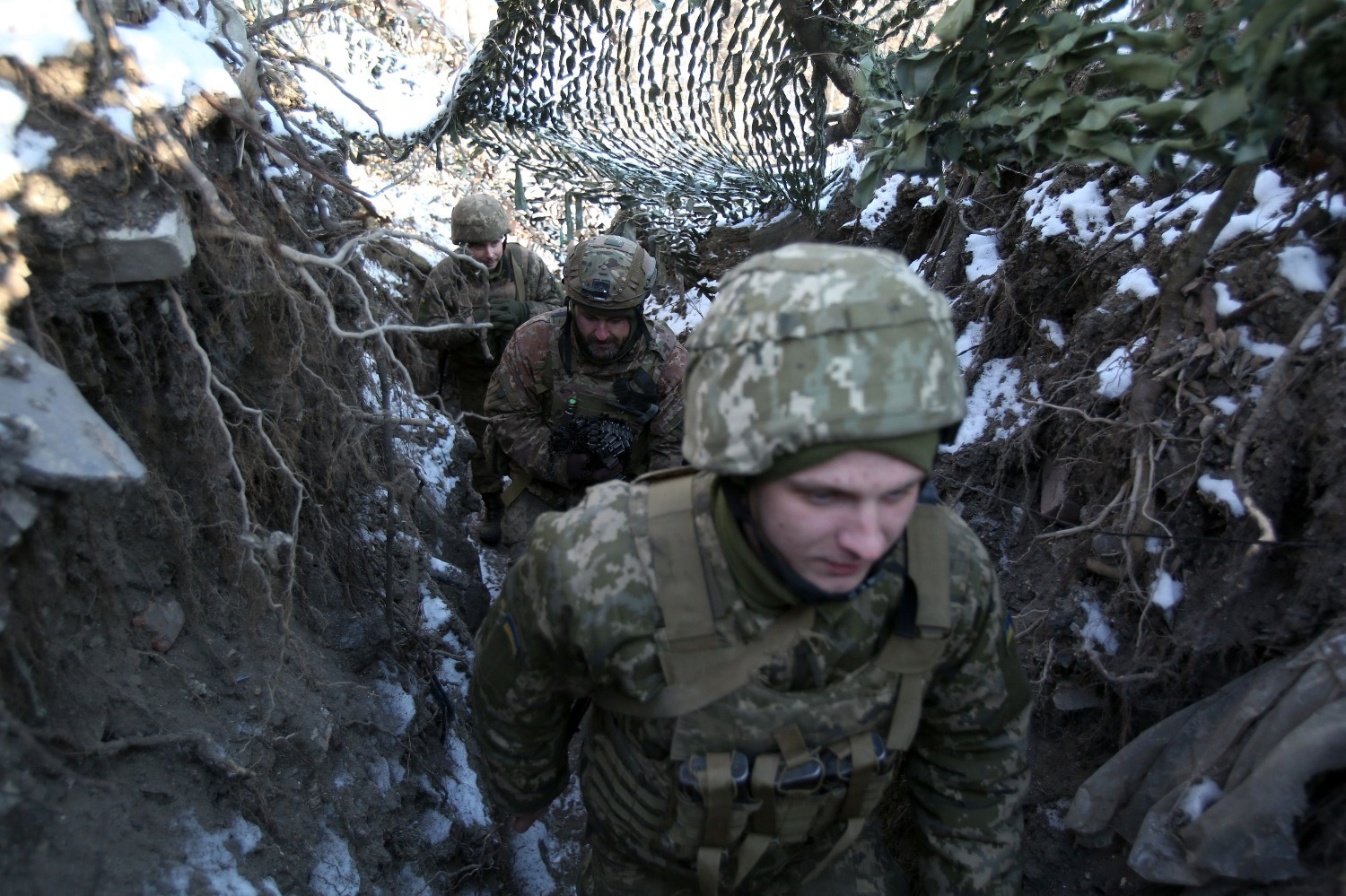RUSSIA and Ukraine’s relationship has never been the best, but tensions have drastically escalated in recent weeks. Why are Russia and Ukraine in conflict and will they go to war?
Russian President Vladimir Putin has amassed about 80,000 troops in Crimea and along Ukraine’s eastern border, including tanks, artillery pieces, support vehicles and armoured transports. Russia hasn’t escalated its presence within the area this much for seven years, since the annexation of Crimea in 2014. It is believed President Putin has redeployed an air brigade from near the Estonian border and sent 10 naval vessels from its fleet in the Caspian Sea to reinforce fleets in the Black Sea. Various European Union (EU) leaders have attempted to speak to Mr Putin in an effort to get him to back down from Ukraine, including German Chancellor Angela Merkel who requested the military blockade be torn down in a personal phone call with the President last week.
There are increasing fears of a war breaking out between Russia and Ukraine – one which could have dire impacts on civilians in Europe.
Fears were validated over the weekend when Russian news anchor Dmitry Kiselyov said live on air the country was “one step from war”.
Mr Kiselyov went further by branding Ukraine a “Nazi” state, saying Russia could be forced to “de-Nazify” it by force through a process which would bring Ukraine “economic and military collapse”.
Experts have warned the two country’s brinkmanship is an incredibly dangerous situation and one which may have lasting ramifications for the rest of the world, but how did it all begin?
Why are Russia and Ukraine in conflict?
Ukraine used to be run by Russia during the USSR’s reign, but when the Soviet bloc collapsed in 1991, Ukraine gained its independence.
Relations between the two countries have been on the boil since then and were even further heightened in 2014 when Russia annexed Ukraine’s Crimea territory.
Recently the hostilities have flared up again over a situation in Ukraine’s Donbass region coupled with Russian military escalation on the Ukraine-Russia border.
On March 26, four Ukrainian soldiers were killed by pro-Russian separatists, a move which breached a ceasefire agreed in 2020 and bringing an abrupt end to a year of relative peace.
In the few weeks that have followed, the situation has become even more precarious and volatile.
Thousands of soldiers now stand on the border, reinforced by military-grade tanks and weaponry.
Ukraine has hit back at Russia, calling the intrusion an unwarranted provocation against its sovereignty.
Secretary of Ukraine’s National Security and Defence Council Oleksiy Danilov said: “We clearly understand the scale of Russian military presence next to our border, and I would like to specify that the question of war depends only on Putin.”
Russia has denied its aggressive behaviour, instead calling the situation an escalated hysteria about a non-existent threat of war.
Spokeswoman for the Russian Foreign Ministry Maria Zakharova said: “Troops are being transported there, mobilisation plans, calls of reservists are being renewed.
“Ukrainian media is escalating hysteria about the Russian mythical threat, about plans of Moscow attacking Ukraine practically tomorrow.”
At the very heart of the conflict is Ukraine’s demographic makeup and geographical location.
As a former Soviet territory, Ukraine is divided into an eastern region, which has close historical and cultural ties to Russia, and the rest of the country which largely identifies as a sovereign Ukraine.
The east has been a hotbed for rebellion and pro-Russian sentiment, with rebels in the area allegedly receiving widespread support from Moscow – something which has played a key role in keeping the conflict thriving.
Since 2014 and the annexation of Crimea, about 13,000 people have lost their lives according to data from the United Nations, including ordinary civilians, Russian separatists and Ukrainian troops.
Ukraine is now pushing for NATO membership to bring an end to the conflict which for both NATO and Europe would mean influence on another one of Russia’s borders.
Moscow, however, doesn’t view it so kindly and sees Ukraine joining NATO as an existential threat.
Russia has billions of dollars invested in Ukraine given that a large part of the power’s oil exports flow through the neighbouring territory.
At this point, the stakes are exceptionally high and it’s safe to say if the situation spirals any further, the implications for not only Europe but the whole world may be catastrophic.








































admin in: How the Muslim Brotherhood betrayed Saudi Arabia?
Great article with insight ...
https://www.viagrapascherfr.com/achat-sildenafil-pfizer-tarif/ in: Cross-region cooperation between anti-terrorism agencies needed
Hello there, just became aware of your blog through Google, and found ...